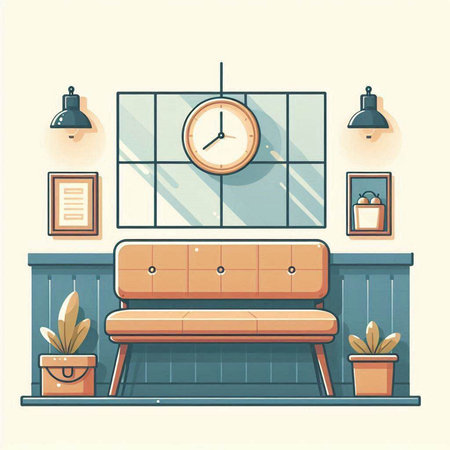Understanding Vastu Dosh in Indian Households
Vastu Shastra, the ancient Indian science of architecture, plays a pivotal role in shaping the design and layout of homes across India. Rooted deeply in tradition, Vastu principles are believed to harmonise energies within a space, ensuring prosperity, health, and happiness for its occupants. However, with the rapid urbanisation and changing lifestyles in modern India, many families find themselves residing in apartments or houses that do not fully comply with traditional Vastu guidelines. This leads to what is commonly referred to as “Vastu Dosh”—energetic imbalances or defects arising from architectural deviations. These doshas can stem from factors such as improper placement of rooms, incorrect orientation of entrances, or even the misalignment of walls. Indian families, both in metro cities like Mumbai and Bengaluru as well as in smaller towns, increasingly face challenges related to these Vastu Doshas due to space constraints and contemporary construction practices. Addressing Vastu Dosh has thus become a significant concern for homeowners seeking peace of mind and positive energy within their living spaces.
2. Significance of Walls According to Vastu
In traditional Indian culture, Vastu Shastra plays a pivotal role in home design and architecture, especially regarding the structure and placement of walls. According to Vastu beliefs, walls are not merely physical barriers; they act as energy conductors and protectors that influence the flow of positive and negative energies within a house. Culturally, Indian families have always considered the layout and direction of walls essential for maintaining harmony, prosperity, and spiritual well-being. The orientation, thickness, and even the color of walls are chosen with great care to align with the five elements—Earth (Prithvi), Water (Jal), Fire (Agni), Air (Vayu), and Space (Akash)—ensuring that each area of the home resonates with balance and positivity.
Vastu Perspective on Wall Placement
The strategic placement of walls as per Vastu guidelines is believed to prevent Vastu Dosh (architectural defects) that can bring about financial losses, health issues, or family discord. For example, a wall facing east should ideally be lighter in color and free from heavy objects to allow maximum sunlight and positive energy. On the other hand, south-facing walls are recommended to be thicker and stronger for enhanced protection against negative influences.
Cultural Relevance in Everyday Life
Indian households often conduct rituals such as “Griha Pravesh” (housewarming ceremony) to bless the walls and ensure that they radiate auspiciousness. Elders in the family may also observe certain taboos like avoiding construction of toilets or kitchens on specific sides of the wall to prevent Vastu Dosh.
Traditional Wall Guidelines in Vastu
| Wall Direction | Recommended Feature | Cultural Belief |
|---|---|---|
| East | Lighter color, fewer obstructions | Invites prosperity and sunlight |
| West | Slightly thicker, neutral colors | Balances energy flow |
| North | Should remain open or have windows | Brings wealth and opportunity |
| South | Thicker walls, strong foundation | Protects from negative forces |
This deep-rooted cultural and spiritual approach to wall construction demonstrates how integral these principles are to Indian homes. By adhering to these time-tested guidelines, families believe they can ward off Vastu Dosh and create an environment filled with peace, growth, and happiness.

3. Common Vastu Doshas Related to Walls
In Indian homes, the placement and structure of walls play a crucial role in maintaining positive energy flow as per Vastu Shastra principles. However, several common Vastu doshas (defects) related to walls can disrupt this balance, impacting the overall well-being and harmony of the family. One frequently observed issue is the presence of cracked or damp walls, especially in the north or east directions. According to Vastu beliefs, such defects may lead to financial losses or health problems for the residents. Another typical problem is the construction of heavy walls or storage areas in the northeast corner, which is considered highly inauspicious and could block prosperity and spiritual growth.
Additionally, many Indian residences inadvertently have extended corners or cut corners due to plot limitations or design trends. These irregular wall alignments can create energy imbalances that manifest as stress, misunderstandings among family members, or lack of peace at home. It is also common to find toilets or kitchens sharing a wall with pooja rooms (prayer spaces), which is discouraged in traditional Vastu as it may result in disturbed mental clarity and emotional instability.
The impact of these wall-related Vastu doshas extends beyond just physical discomfort; families may notice recurring obstacles in career advancement, educational pursuits, and relationship harmony. Recognizing these issues early and implementing appropriate remedies—such as correcting wall alignment, using Vastu-friendly paints, or placing symbolic remedies—can significantly enhance positivity and prosperity within the household. By addressing these common wall-related defects, Indian homeowners can foster a more balanced environment aligned with both cultural values and modern aspirations.
4. Remedies for Wall-Related Vastu Doshas
Wall-oriented Vastu doshas are common challenges in Indian homes, but with the right approach, homeowners can address these issues effectively. Below are practical tips, traditional cures, and cost-effective solutions tailored specifically for Indian families seeking harmony and prosperity through Vastu-compliant walls.
Practical Tips for Correcting Wall Defects
- Repair Damaged Walls: Cracks or dampness can invite negative energies. Promptly repair all wall damages to restore positive vibrations.
- Right Colour Selection: Use light colours such as off-white, cream, or pastel shades on north and east-facing walls to attract good energy. Avoid dark shades in these directions.
- Declutter Wall Spaces: Keep walls free from unnecessary shelves or heavy objects, especially in the northeast, to maintain a smooth flow of energy.
Traditional Remedies Adopted in India
- Swastik and Om Symbols: Drawing auspicious symbols like Swastik or Om on main entrance walls is believed to ward off negativity.
- Lemon and Salt Remedy: Hanging a lemon with seven green chillies at the main wall near the entrance is a widely used remedy for protecting against evil eyes.
- Sacred Yantras: Placing Vastu-friendly yantras such as Shree Yantra on affected walls helps neutralise doshas and attract prosperity.
Cost-Effective Solutions for Indian Households
| Issue | Remedy | Estimated Cost |
|---|---|---|
| Damp/Cracked Walls | Cement patching & waterproofing paint | ₹500–₹2000 per wall |
| Wrong Colour Placement | Repainting with recommended Vastu colours | ₹1500–₹4000 per room |
| Lack of Auspicious Symbols | Hand-painted Swastik or Om symbols | ₹100–₹500 each symbol |
| Northeast Blockages | Removing shelves & decluttering items | No cost if DIY; minimal for labour help |
| Negative Energy Entry | Lemon-chilli totka at entrance wall | ₹10–₹30 per week (recurring) |
Expert Advice for Sustainable Results
If wall-related doshas persist despite initial remedies, consult a certified Vastu consultant familiar with regional traditions. They may recommend advanced solutions like copper strips within the wall or strategic placement of mirrors and lighting to balance energies according to local customs.
Conclusion: Embracing Positive Change Through Simple Actions
Tackling wall-related Vastu defects does not always require major renovations. With awareness of cultural practices and affordable remedies, Indian homeowners can achieve lasting harmony, health, and prosperity within their living spaces by simply making mindful changes to their walls.
5. Role of Regional Practices and Materials
India’s vast diversity is reflected not only in its languages and festivals but also in its approach to home construction and Vastu compliance. Each region has developed unique customs, building techniques, and material preferences that influence how walls are constructed and positioned for optimal Vastu Dosh remedies. For instance, homes in Rajasthan often utilise locally sourced sandstone, which is believed to have natural energy-balancing properties according to local Vastu experts. In contrast, the southern states commonly favour laterite stone or granite, each carrying its own significance in regional Vastu interpretations.
Customary practices also play a significant role in shaping wall placement. In West Bengal, traditional ‘thakurdalan’ spaces are designed with specific wall alignments to enhance spiritual harmony as per Bengali Vastu traditions. Similarly, in Kerala, the classic ‘nalukettu’ style homes feature thick exterior walls made from mud and brick, aligning with indigenous beliefs about thermal comfort and positive energy flow. These region-specific architectural choices are not just aesthetic decisions but are deeply intertwined with the community’s understanding of Vastu Shastra principles.
Moreover, local construction techniques—such as lime plastering in Gujarat or mud walls in rural Madhya Pradesh—affect how Vastu remedies are applied. The permeability, thickness, and orientation of these walls can either amplify or neutralise Vastu doshas depending on their composition and placement. As India continues to modernise, there is a growing trend towards integrating contemporary materials like concrete and glass while still respecting traditional Vastu guidelines. Homeowners now often consult both modern architects and local Vastu consultants to ensure that any new construction or renovation remains aligned with regional customs without compromising on functionality or aesthetics.
6. Pro-Tips for Modern Indian Homes
Expert Guidance for Harmonious Living Spaces
As Indian families increasingly embrace modern architecture and interiors, blending Vastu principles with contemporary home designs has become a top trend. Expert advice suggests that while open layouts and minimalist aesthetics are gaining popularity, the importance of walls for correcting Vastu Dosh remains significant. Here’s how you can integrate traditional wisdom with today’s design preferences.
1. Smart Wall Placements
In modern flats or villas, walls should be strategically placed to demarcate zones of activity and rest in accordance with Vastu directions. For example, ensure that bedrooms have solid walls in the southwest direction to enhance stability and family harmony, while avoiding bathrooms or kitchens in this zone.
2. Use of Vastu-Friendly Materials
Opt for natural materials such as stone, brick, or textured finishes on primary walls. These not only add a luxurious touch but also align with Vastu recommendations for promoting positive energy flow throughout the home. Avoid metallic paints or synthetic claddings especially on the northeast and east walls.
3. Incorporating Remedial Elements
If structural changes aren’t feasible in high-rise apartments or rented accommodations, use Vastu remedies like mirrors, wall-mounted crystals, or sacred symbols to correct any existing dosh. Experts recommend placing a mirror on the north wall to reflect prosperity or hanging a painting of flowing water to encourage wealth and peace.
4. Trendy Colour Schemes with Purpose
Indian homeowners love experimenting with colours but Vastu suggests choosing hues mindfully. Go for light shades such as off-white, beige, or pale yellow for east-facing walls to attract positivity, while earthy tones like terracotta and ochre work best for south and southwest walls.
Expert Tip:
If you’re working with an interior designer, ensure they consult a certified Vastu expert before finalising wall positions and finishes. This collaboration guarantees that your dream home is both stylish and harmonious according to Indian sensibilities.
5. Embracing Smart Home Technology
Today’s smart homes can seamlessly integrate Vastu corrections using IoT devices—smart lighting, air purifiers, or automated curtains installed on specific walls can enhance both comfort and energy balance as per expert recommendations.
Conclusion: Future-Ready Indian Homes
The evolving trends in Indian home design show that respecting Vastu principles doesn’t mean compromising on style. With thoughtful planning and expert guidance, it’s possible to achieve a perfect blend of tradition and modernity, ensuring your family enjoys prosperity, health, and peace for years to come.

